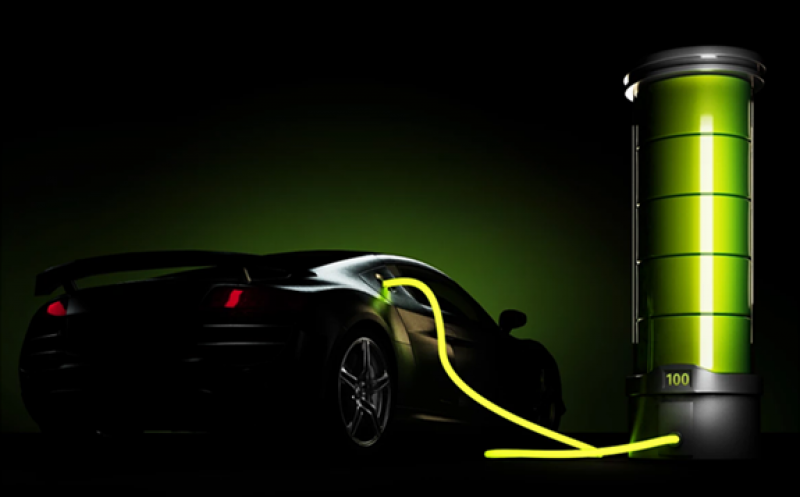For electric planes to really take off and for electric cars to travel far longer distances between charges, we'll need batteries that pack far more energy without becoming prohibitively heavy. A team in Germany has now demonstrated a new lithium-metal battery with a density well beyond the significant 500-Wh/kg benchmark and an ability to retain its performance across hundreds of cycles.

Today's lithium-ion batteries do a wonderful job of keeping the modern world running, from electric vehicles to smartphones, to laptop computers, but scientists see a lot of potential that could be unlocked through tweaks to their architecture. One of the more promising possibilities is swapping out the graphite used in one of the battery's electrodes for pure lithium metal, a material that can hold as much as 10 times the energy.
For this reason, lithium metal is hailed as a "dream material" by some battery researchers and may well help us break through a key bottleneck in energy storage, but stability issues have plagued the technology so far. Much of this relates to adverse reactions between the electrolyte solution, which carries the lithium ions, and the battery's two electrodes, the cathode and anode.
Among the many research groups working to solve this problem is a team at Karlsruhe Institute of Technology and Helmholtz Institute Ulm (HIU), who have come up with a design that largely sidesteps this problem. The researchers started off with what's described as a cobalt-poor, nickel-rich layered cathode (NCM88) and a commercially available organic electrolyte called LP30. While the cathode reached high energy density, instability soon took hold and storage capacity decreased as the battery was cycled.
“In the electrolyte LP30, particles crack on the cathode," explains Professor Stefano Passerini, Director of HIU. "Inside these cracks, the electrolyte reacts and damages the structure. In addition, a thick mossy lithium-containing layer forms on the anode.”
So the team swapped out the LP30 electrolyte for an alternative, and one that brought about profound gains in performance. Described as a non-volatile, poorly-flammable, dual-anion ionic liquid electrolyte (ILE), this ingredient proved to largely avoid the structural defects on the cathode and saved the battery from the fatal electrochemical reactions.
“With the help of ILE, structural modifications on the nickel-rich cathode can be reduced significantly,” says Dr. Guk-Tae Kim.
And the results are rightly described as "remarkable." The lithium-metal battery with this architecture had an energy density of 560 Wh/kg. For context, there are research consortiums dedicated to breaking through the 500-Wh/kg density threshold in order to power next-generation electric vehicles, while today's best-in-class lithium-ion batteries have energy densities of 250 to 300 Wh/kg.
Earlier this year we reported on a record-setting lithium metal battery with an energy-density of 350 Wh/kg, which retained 76 percent of its capacity over 600 cycles. In terms of longevity, the new lithium metal battery design also performed remarkably well, starting out with an initial storage capacity of 214 mAh/g in the cathode material and retaining 88 percent of that across 1,000 cycles.
Another area where the novel lithium metal battery proved very capable was in its Coulombic efficiency, which relates to how efficiently the lithium ions are transferred between the anode and cathode. Charging 100 lithium ions and then getting 100 back after discharging would be a Coulombic efficiency of 100 percent, and commercial batteries need an efficiency of at least 99.9 percent to be viable. The creators of this new lithium metal battery are reporting an average Coulombic efficiency of 99.94 percent.
There will be much work to do to translate these promising results on lab-scale cells to the real world, but a stable battery that offers such high energy density could change the game when it comes to electric transportation. Electric planes, for example, are severely limited by the energy density of today's batteries, and can therefore only cover relatively short distances. The limited range of electric cars can be addressed somewhat by expanding charging infrastructure, but the type of high energy-to-weight ratio seen in this battery could enable them to travel tremendous distances, and do a lot to quell so-called range anxiety among potential buyers.